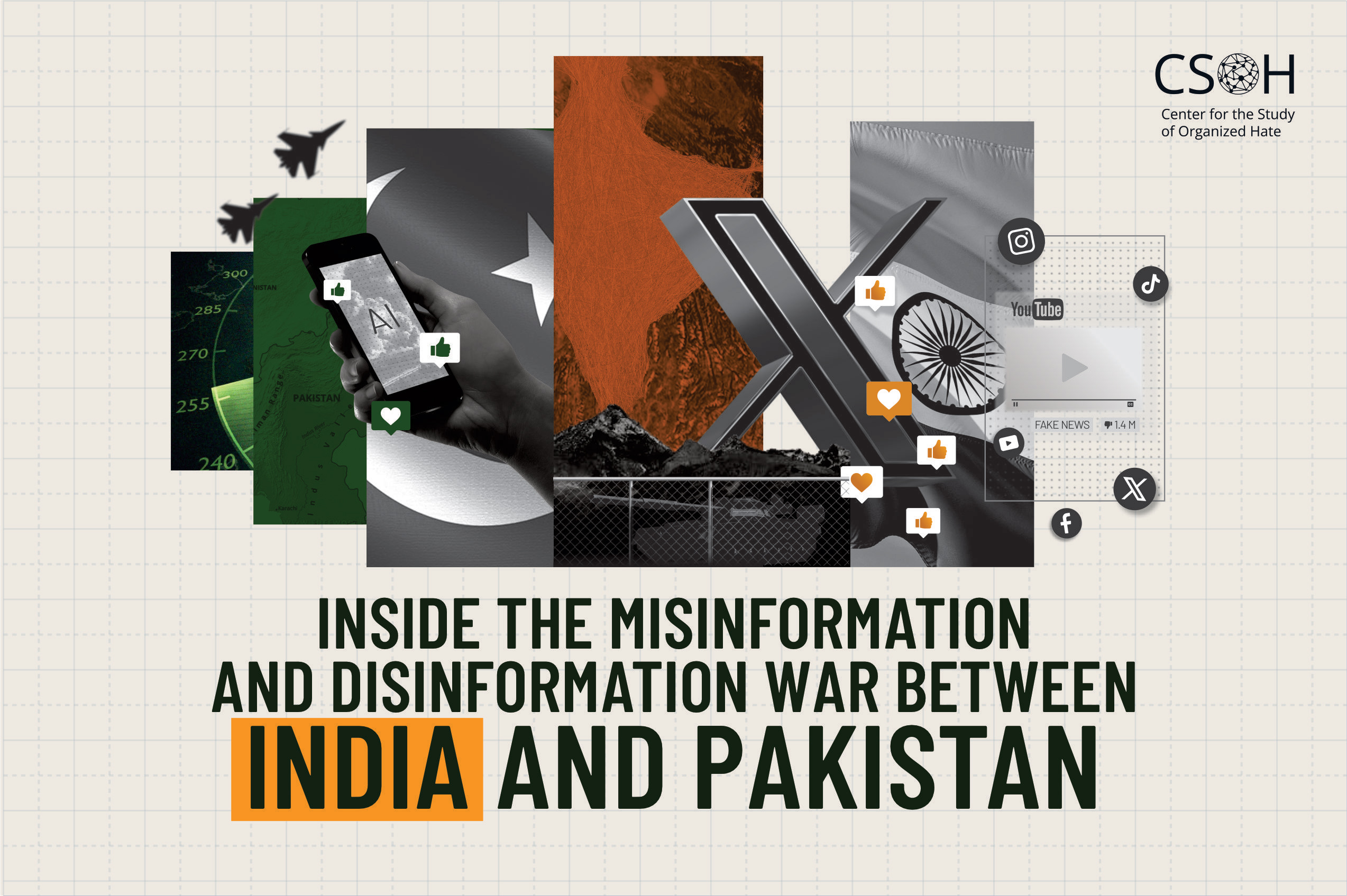Washington, DC (May 16, 2025) — The Center for the Study of Organized Hate (CSOH) today released a new report, “Inside the Misinformation and Disinformation War Between India and Pakistan,” which offers a comprehensive analysis of the misinformation and disinformation trends that emerged following the outbreak of active hostilities between both the countries on May 7.
CSOH found a huge surge in misinformation and disinformation across mainstream news outlets in both countries and on social media platforms, which shaped public perception and intensified bilateral tensions. False reports of military victories, doctored videos purporting to show successful airstrikes, fabricated images of destroyed infrastructure, use of footage from Russia-Ukraine war and bombings in Gaza, rumors about the deaths or arrests of high-profile military and political figures, rumours of coup, including nuclear radiation leak proliferated across social media platforms, including X (formerly Twitter), Facebook, Instagram, and YouTube.
Key Findings
- Coordinated misinformation and disinformation campaigns were evident on both sides, with Indian pro-government influencers openly framing it as “electronic warfare.”
- Indian mainstream media outlets played a significant role in amplifying false claims, with major channels broadcasting unverified information as “breaking news,” lending credibility to fabricated stories.
- Video game footage was weaponized as “evidence” of military victories, particularly in the context of airstrikes and military engagements. Footage from pre-existing games were edited with text overlays, patriotic soundtracks, and strategic commentary to create battlefield narratives that generated millions of views.
- A large portion of misinformation came from old or unrelated visuals, such as recycled footage from unrelated conflicts or incidents. These were re-contextualized to suggest ongoing military actions.
- AI generated content represented a significant evolution in misinformation tactics. Fabricated stories about Pakistani military figures supported by AI-generated visuals were widely circulated in India. Similarly, AI-generated videos and images falsely depicted Indian military losses and humiliations.
- Social media platforms served as primary vectors for cross-border information warfare. Platforms including X, Facebook, Instagram, and YouTube played a crucial role in spreading this content. Despite efforts by fact-checking organizations, a significant amount of misleading content went unchecked, amplifying its reach and impact.
- X emerged as the primary hub for both misinformation and disinformation. Of the 437 X posts we examined, 179 originated from verified accounts and only 73 were flagged with Community Notes.
The online tactics observed during the recent India-Pakistan flare-up closely mirror those deployed by Russia in the Russia–Ukraine conflict. In both cases, state and proxy actors leveraged coordinated propaganda and disinformation campaigns to amplify alleged battlefield successes, justify ongoing military operations, and manipulate domestic and international opinion.
As social media platforms increasingly become battlegrounds for narrative control, the recent conflict highlights the urgent need for robust, coordinated strategies to combat disinformation, including enhanced platform accountability, advanced detection tools, building cross-border fact-checking networks and public education and awareness initiatives, in order to build societal resilience against harmful content and mitigate its role in future geopolitical conflicts and safeguard regional stability.
For media inquiries, please contact [email protected]
